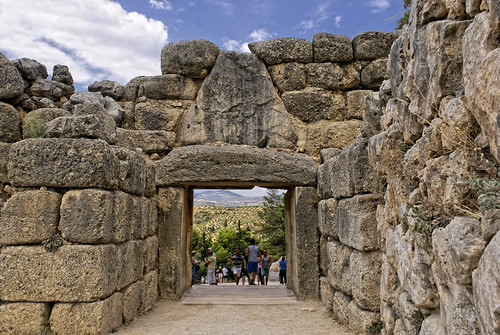Plato first mentioned the lost city of Atlantis around 2,400 years ago. But now a team of American archaeologists are unearthing the secrets of a 3,500-year-old partially submerged city lying in the Saronic Gulf of Greece.
Lying 60 miles southwest of the modern capital Athens, ‘Korphos-Kalamianos’ is just miles away from the ancient city of Mycenae and was most likely built between 1400 – 1200 BC.
Florida State University professor Daniel J. Pullen and the University of Pennsylvania’s Assistant Professor of Classical Studies Thomas F. Tartaron discovered the site whilst conducting an initial 2007 study.
Pullen claims the pair were ecstatic at the way the sea had preserved their astonishing find. “Because of soil erosion and tectonic subsidence (via earthquakes), much of the soil had already been stripped from the site. So the architectural remains of about 20 acres of closely built structures were plainly visible.”
So far the team have already identified many foundations and walls – some as high as five metres – which indicate to Pullen the use of the sunken city:
“All of the structures were laid out in a grid pattern, which suggests that the entire community was planned and then built all at once, rather than piecemeal. This would indicate that the settlement was built with some strategic purpose, perhaps as a military or naval outpost.”
“We have identified some fortification walls with gates on the inland side of Korphos-Kalamianos,” Pullen adds, “which does suggest that the town had at least some role as a fortress, possibly to protect the harbour.”
Pullen and Tartaron initially travelled to the site with high-tech devices such as Global Positioning Systems. However they have brought five FSU students and two alumni along on this summer’s follow-up trip, when they plan to work in conjunction with Greece’s department of underwater antiquities on a bathymetric (depth) study of the area. And Pullen is confident that the three-year project, entitled Saronic Harbours Archaeological Research Project (SHARP), can unlock more secrets of the area’s Bronze Age coastline.
Image by Leslie.
